Popular Embroidery Machine Fonts You Must Know
In this article, we will explore some popular embroidery machine fonts that you should know about. We will provide a brief description of each font style and its best applications to help you choose the perfect font for your next embroidery project.
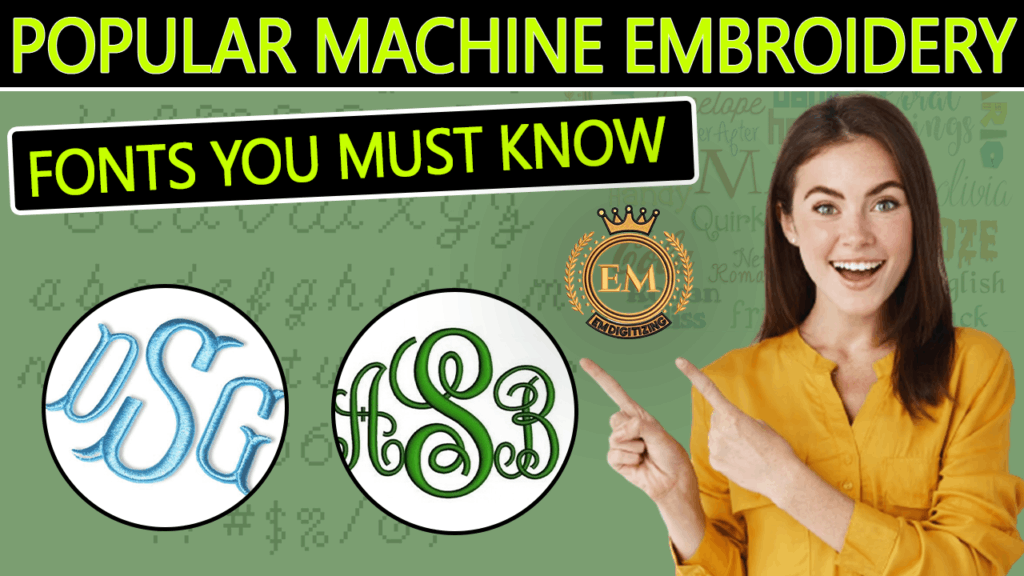
Popular Embroidery Machine Fonts You Must Know
Embroidery is an art form that has been practiced for centuries, and with the advent of embroidery machines, it has become even more accessible and customizable. One of the key features of an embroidery machine is its ability to use different fonts to create unique and personalized designs. Embroidery machine fonts come in a variety of styles, from classic to modern, and can be used to create monograms, logos, and other designs.
1. Script:
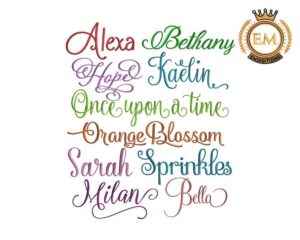
Script fonts are characterized by their elegant and flowing lines, making them a popular choice for monograms and wedding designs.
2. Block:

Block fonts are bold and straightforward, making them a great choice for logos and other designs that require legibility.
3. Serif:
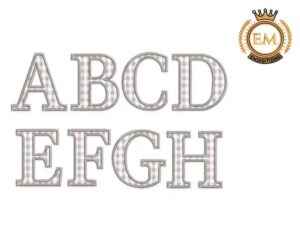
Serif fonts have small lines or flourishes at the end of their strokes, making them a popular choice for formal embroidery designs.
4. Sans Serif:
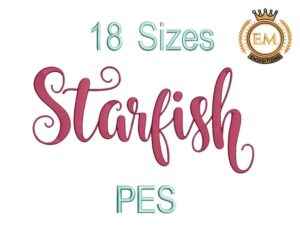
Sans Serif fonts do not have the small lines or flourishes, giving them a more modern and clean look.
5. Outline:
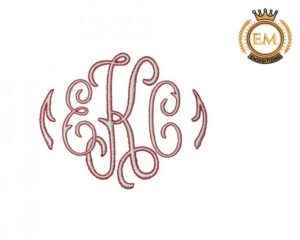
Outline fonts are created by stitching the outline of each letter, leaving the interior empty. They are a popular choice for logos and embroidery designs that require a more minimalist look.
6. 3D Puff:
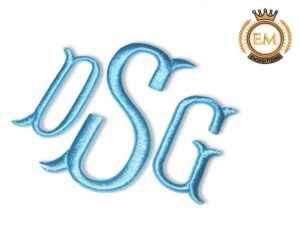
3D Puff fonts are created by using a foam backing under the stitches, creating a raised effect that gives the design a three-dimensional look.
7. Run Stitch:
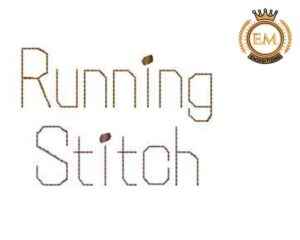
Run Stitch fonts are created by stitching a single line to create each letter, giving them a simple and elegant look.
8. Satin Stitch:
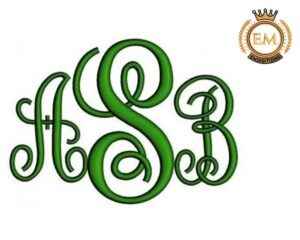
Satin Stitch fonts are created by stitching a series of closely spaced stitches to fill in the interior of each letter, giving them a smooth and shiny appearance.
9. Bean Stitch:
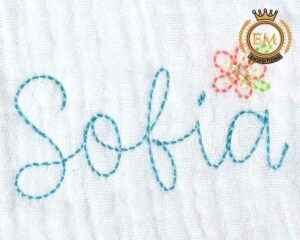
Bean Stitch fonts are created by using a tight zigzag stitch to create each letter, giving them a whimsical and playful look.
10. Cross Stitch:
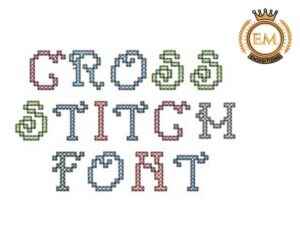
Cross Stitch fonts are created by stitching a series of X-shaped stitches to create each letter, giving them a classic and traditional look.
11. Vintage:
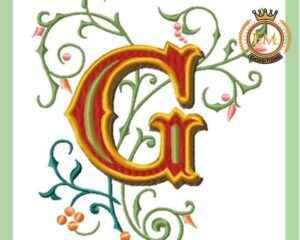
Vintage fonts are designed to look like they were created in a bygone era, making them a popular choice for retro or nostalgic designs.
12. Graffiti:
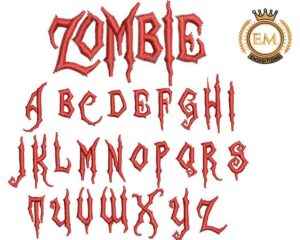
Graffiti fonts are inspired by street art and have a bold and edgy look, making them a popular choice for urban and modern designs.
13. Stitched: Handwritten Font:
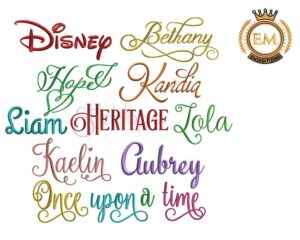
Stitched is a popular embroidery machine font that mimics the look of handwritten script. This font style is characterized by its cursive lettering with slightly irregular and wavy lines that create a natural and organic look. Stitched is a versatile font that can be used in a variety of embroidery projects, especially those that require a personalized and handmade touch.
14. Cross Stitch Cursive:
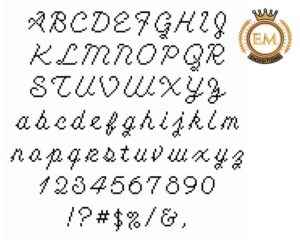
Cross Stitch Cursive is an embroidery machine font that mimics the look of cursive handwriting created with cross stitches. This font style is characterized by the use of a series of X-shaped stitches to create each letter, giving the text a classic and traditional look that is reminiscent of old-fashioned needlework.
15. Good Morning:

A Good Morning is a popular embroidery machine font that is characterized by its flowing, script-style lettering. This font has a modern and contemporary feel that is perfect for a wide range of embroidery projects, from clothing to home decor. Good Morning is a relatively new font that has quickly gained popularity among embroidery enthusiasts for its elegant and versatile look.
16. Family Home:
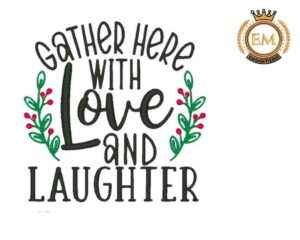
“Family Home” is a script font that has a lovely and elegant appearance. It is a typeface that mimics handwriting, with letters that connect to one another in a flowing manner, creating a sense of harmony and unity. The font has a unique and personal touch that makes it perfect for projects that require a warm and friendly tone, such as wedding invitations, greeting cards, or branding for small businesses. Its curves and swashes add a touch of sophistication, making it an excellent choice for designs that need to convey elegance and style.
17. Bodoni Terracina:
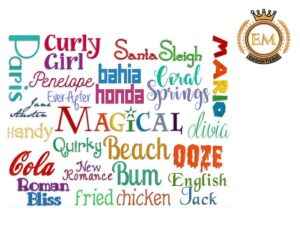
“Bodoni Terracina” is a serif font that has a classic and elegant appearance. It is a typeface that is based on the Bodoni style, which is characterized by its high contrast between thick and thin strokes, and its vertical stress. The “Terracina” variation of the font adds a slight flare to the serifs, giving it a unique touch that sets it apart from other Bodoni fonts. The font is often used in high-end fashion and beauty brands due to its luxurious and sophisticated look. It can also be an excellent choice for editorial design, book covers, and other print materials that require a refined and timeless style.
Winding Up:
In conclusion, embroidery machine fonts offer endless possibilities for creating unique and personalized designs. By understanding the different font styles and their best applications, you can choose the perfect font to take your embroidery projects to the next level. Whether you prefer classic elegance or modern edginess, there is a font out there that will suit your style.
We hope you enjoyed reading this article as we did in writing.
If you want to customize embroidery logo digitizing, EM DIGITIZING will be your best choice. At EM DIGITIZING, we deliver the best embroidery logo embroidery digitizing services with the best quality. We offer 50% off on all our services to our potential customers on their first order. So, get a free quote now and we will get in touch with you.
Hope this article will be helpful for you guys!
If there’s any question related to this article feel free to comment to us. And, thanks for reading!
When it comes to machine embroidery, there are several fonts that work well. However, the best fonts for machine embroidery are those that are clear, legible, and have a consistent stroke width. Serif fonts with thin, delicate lines and sharp angles may not translate well to embroidery, as they can get lost in the stitching or become difficult to read.
Some of the best fonts for machine embroidery are sans-serif fonts, such as Arial, Helvetica, and Futura. These fonts have clean lines and are easy to read, even at small sizes. Other popular fonts for machine embroidery include block fonts like Impact and Stencil, as well as script fonts like Brush Script and Monotype Corsiva.
Yes, it is possible to add new fonts to an embroidery machine, but it depends on the specific machine and its capabilities. Some embroidery machines have built-in fonts that cannot be modified or expanded, while others may allow you to add new fonts through a USB drive or special software.
If your embroidery machine supports adding new fonts, you will need to purchase or download the new font file in a compatible format for your machine. The most common font file formats for embroidery machines are DST, PES, and JEF. Once you have the font file, you can transfer it to the machine via USB or memory card.
The best font for machine embroidering small letters is a sans-serif font with simple, clean lines, and a consistent stroke width. This is because small letters in a serif font with thin lines and intricate details may not translate well to embroidery, and the letters may become difficult to read or look messy.
Some of the best fonts for machine embroidering small letters include Arial, Helvetica, and Futura, as they have clean, legible lines that work well in small sizes. It’s also important to consider the density of the stitch when embroidering small letters to ensure that the letters are clear and readable.
The best font size for letters depends on the medium in which they will be presented and the desired level of readability.
For printed materials such as books, newspapers, and magazines, a font size between 10 and 12 points is usually used. For headings, a font size between 14 and 18 points is commonly used to create emphasis and hierarchy.
When it comes to digital media, such as websites, emails, and presentations, a font size between 16 and 18 pixels is typically recommended to ensure readability on various devices and screen sizes. For headings, a font size between 24 and 36 pixels can be used to create emphasis.
It’s also essential to consider the font style and the overall design when selecting the font size for letters. A font with a smaller size may be more difficult to read if it has intricate details or thin lines. A larger font size may look unprofessional or overwhelming if it’s not balanced with enough white space and appropriate margins. Therefore, it’s essential to choose a font size that is appropriate for the context and design of the letter.
